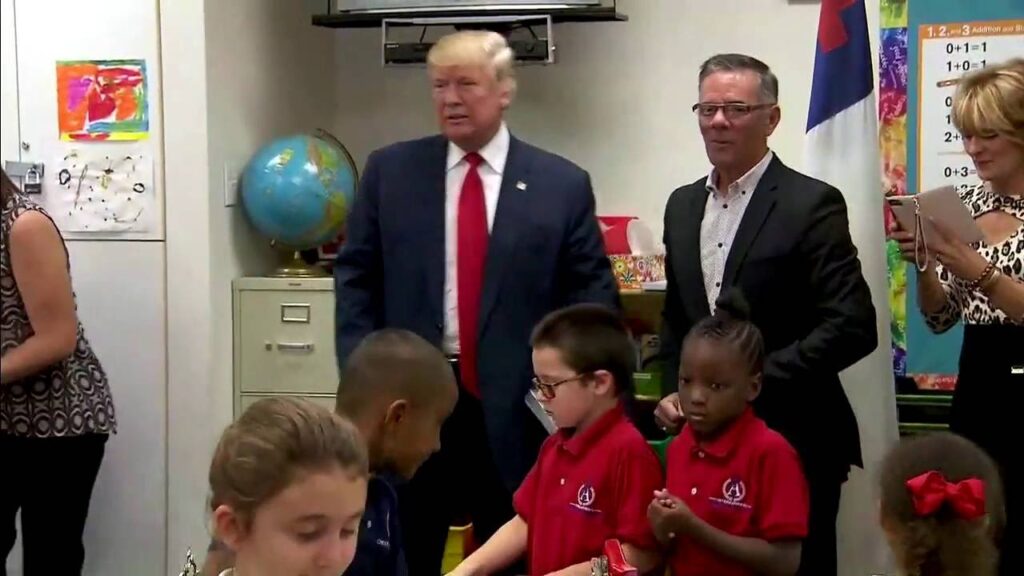WASHINGTON (AP) — The looming threat of a government shutdown has once again gripped Washington D.C., sparking concerns about its potential implications. Historically, lawmakers and the president have managed to avert shutdowns, but current discussions reveal a challenging landscape.
Republicans propose a temporary funding measure lasting until November 21, yet Democrats persistently demand provisions to address healthcare, specifically opposing cuts to Medicaid from President Donald Trump’s previous legislation. Republican leaders remain steadfast, viewing these demands as non-negotiable.
Expectations suggest that neither party is willing to compromise, which raises pressing questions about the ramifications of a government shutdown. Should access to funding lapse, federal agencies will be mandated to cease operations and furlough “non-excepted” employees. However, workers deemed essential – such as law enforcement and military personnel – would remain on duty, albeit without immediate pay.
During the Trump administration's long 35-day shutdown, for instance, around 340,000 federal employees were furloughed, leaving their financial futures uncertain. In contrast, essential services, including Social Security, veteran healthcare, and some law enforcement operations, would typically continue.
Federal workers affected by furloughs could receive retroactive pay, as Congress has historically intervened post-shutdown to ensure compensation. Nonetheless, the initial loss of income raises concerns over financial stress and stability for numerous families.
Despite a shutdown, the U.S. Postal Service would carry on with mail delivery since it operates independently of government funding. The extent of closures and the services preserved during a shutdown would rest largely on the discretion of federal agencies, which typically draft specific shutdown plans detailing operational continuity.
As seen in previous shutdowns, organizations within the government have demonstrated flexibility in their approach, though contentious decisions have sometimes led to legal ambiguities.
In this precarious environment, the potential shutdown looms large, catalyzing discussions not only about funding but also about the operational viability of federal agencies and the welfare of federal employees. Making sense of these intricate dynamics is imperative as the political landscape continues to evolve.
Republicans propose a temporary funding measure lasting until November 21, yet Democrats persistently demand provisions to address healthcare, specifically opposing cuts to Medicaid from President Donald Trump’s previous legislation. Republican leaders remain steadfast, viewing these demands as non-negotiable.
Expectations suggest that neither party is willing to compromise, which raises pressing questions about the ramifications of a government shutdown. Should access to funding lapse, federal agencies will be mandated to cease operations and furlough “non-excepted” employees. However, workers deemed essential – such as law enforcement and military personnel – would remain on duty, albeit without immediate pay.
During the Trump administration's long 35-day shutdown, for instance, around 340,000 federal employees were furloughed, leaving their financial futures uncertain. In contrast, essential services, including Social Security, veteran healthcare, and some law enforcement operations, would typically continue.
Federal workers affected by furloughs could receive retroactive pay, as Congress has historically intervened post-shutdown to ensure compensation. Nonetheless, the initial loss of income raises concerns over financial stress and stability for numerous families.
Despite a shutdown, the U.S. Postal Service would carry on with mail delivery since it operates independently of government funding. The extent of closures and the services preserved during a shutdown would rest largely on the discretion of federal agencies, which typically draft specific shutdown plans detailing operational continuity.
As seen in previous shutdowns, organizations within the government have demonstrated flexibility in their approach, though contentious decisions have sometimes led to legal ambiguities.
In this precarious environment, the potential shutdown looms large, catalyzing discussions not only about funding but also about the operational viability of federal agencies and the welfare of federal employees. Making sense of these intricate dynamics is imperative as the political landscape continues to evolve.




















